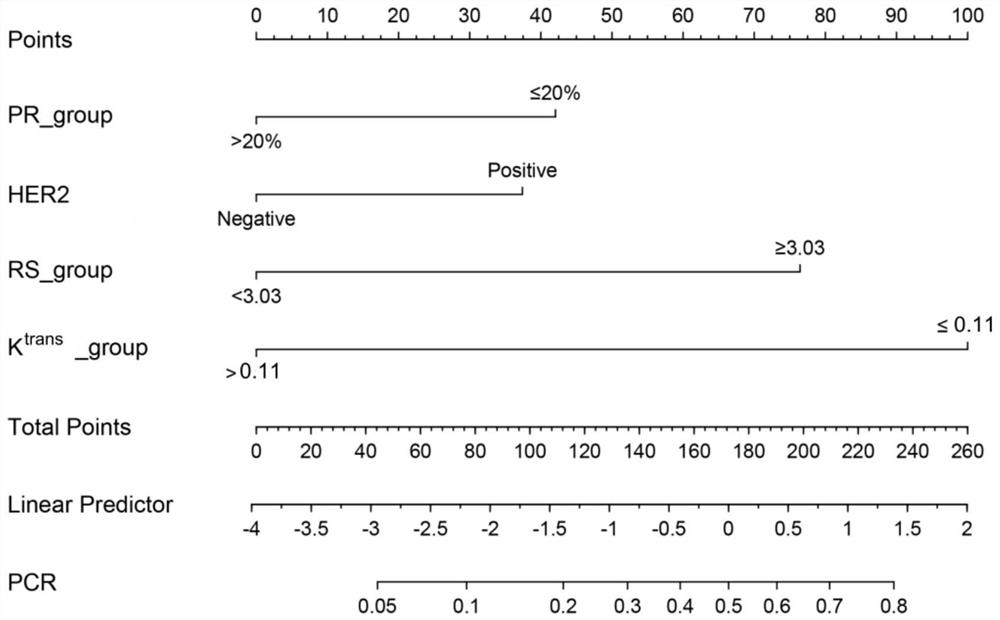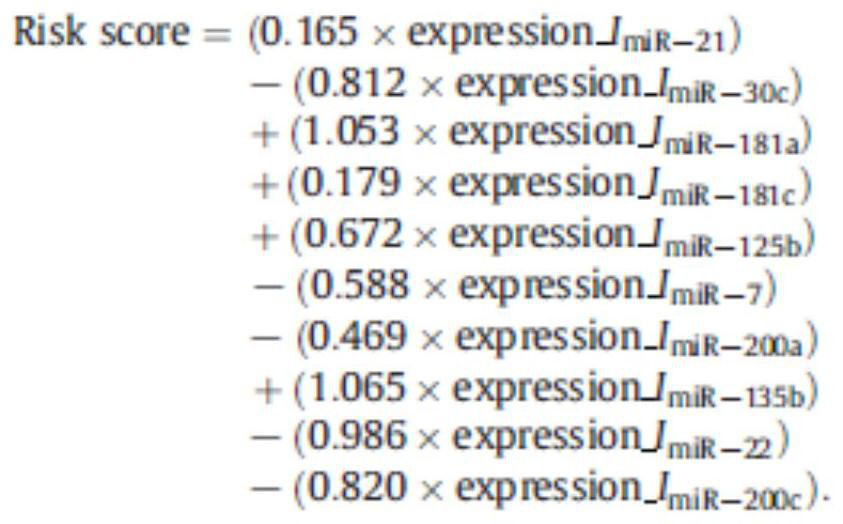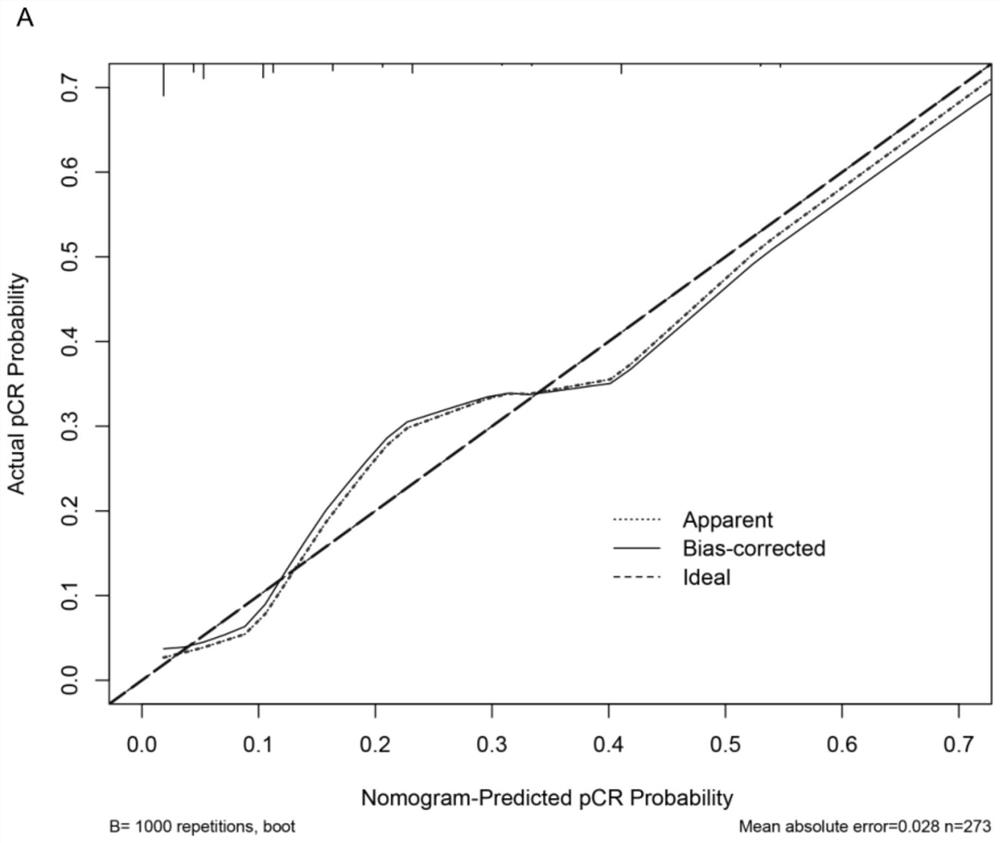Method and system for predicting pathological complete remission probability after breast cancer neoadjuvant chemotherapy
A technology of complete remission and probability prediction, applied in the field of medical information, can solve problems such as difficult promotion, low diagnostic efficiency, and high price of multi-gene model detection, and achieve the effect of avoiding toxic side effects and optimizing treatment strategies
- Summary
- Abstract
- Description
- Claims
- Application Information
AI Technical Summary
Problems solved by technology
Method used
Image
Examples
Embodiment 1
[0072] This example proposes a method for predicting the probability of pathological complete remission after neoadjuvant chemotherapy for breast cancer, the method comprising the following steps:
[0073] S1. Collect patient information to form a training set;
[0074] S2. In the training set formed by S1, screen out independent predictors related to clinicopathological status through multivariate regression analysis;
[0075] S3. Constructing the independent predictors related to clinicopathological status obtained in S2 into a nomogram model, and obtaining the weight scores of each independent predictor included in the nomogram model;
[0076] S4. Calculate the probability prediction value of pathological complete remission after neoadjuvant chemotherapy for breast cancer by nomogram model analysis.
[0077] Further, in S1, the patient information is the information of patients with hormone receptor-positive breast cancer, including demographic characteristics information,...
Embodiment 2
[0088] This embodiment proposes a computer-readable storage medium on which a computer program is stored, and when the program is executed by a processor, the following steps S1-S4 are implemented:
[0089] S1. Collect patient information to form a training set;
[0090] S2. In the training set formed by S1, screen out independent predictors related to clinicopathological status through multivariate regression analysis;
[0091] S3. Constructing the independent predictors related to clinicopathological status obtained in S2 into a nomogram model, and obtaining the weight scores of each independent predictor included in the nomogram model;
[0092] S4. Calculate the probability prediction value of pathological complete remission after neoadjuvant chemotherapy for breast cancer by nomogram model analysis.
[0093] Further, in S1, the patient information is the information of patients with hormone receptor-positive breast cancer, including demographic characteristics information...
Embodiment 3
[0104] This embodiment proposes a method for constructing a pathological complete remission probability prediction model after neoadjuvant chemotherapy for breast cancer, the construction method comprising the following steps:
[0105] S1. Collect patient information to form a training set;
[0106] S2. In the training set formed by S1, screen out independent predictors related to clinicopathological status through multivariate regression analysis;
[0107] S3. Constructing the independent predictors related to the clinicopathological state obtained in S2 into a nomogram model, and simultaneously obtaining the weight scores of each independent predictor included in the nomogram model;
[0108] S4. Net gain calculated by the nomogram model analysis of the threshold probability of pathological complete response after neoadjuvant chemotherapy for breast cancer to evaluate the clinical utility of this predictive model.
[0109] Further, in S1, the patient information is the infor...
PUM
 Login to View More
Login to View More Abstract
Description
Claims
Application Information
 Login to View More
Login to View More - R&D
- Intellectual Property
- Life Sciences
- Materials
- Tech Scout
- Unparalleled Data Quality
- Higher Quality Content
- 60% Fewer Hallucinations
Browse by: Latest US Patents, China's latest patents, Technical Efficacy Thesaurus, Application Domain, Technology Topic, Popular Technical Reports.
© 2025 PatSnap. All rights reserved.Legal|Privacy policy|Modern Slavery Act Transparency Statement|Sitemap|About US| Contact US: help@patsnap.com



